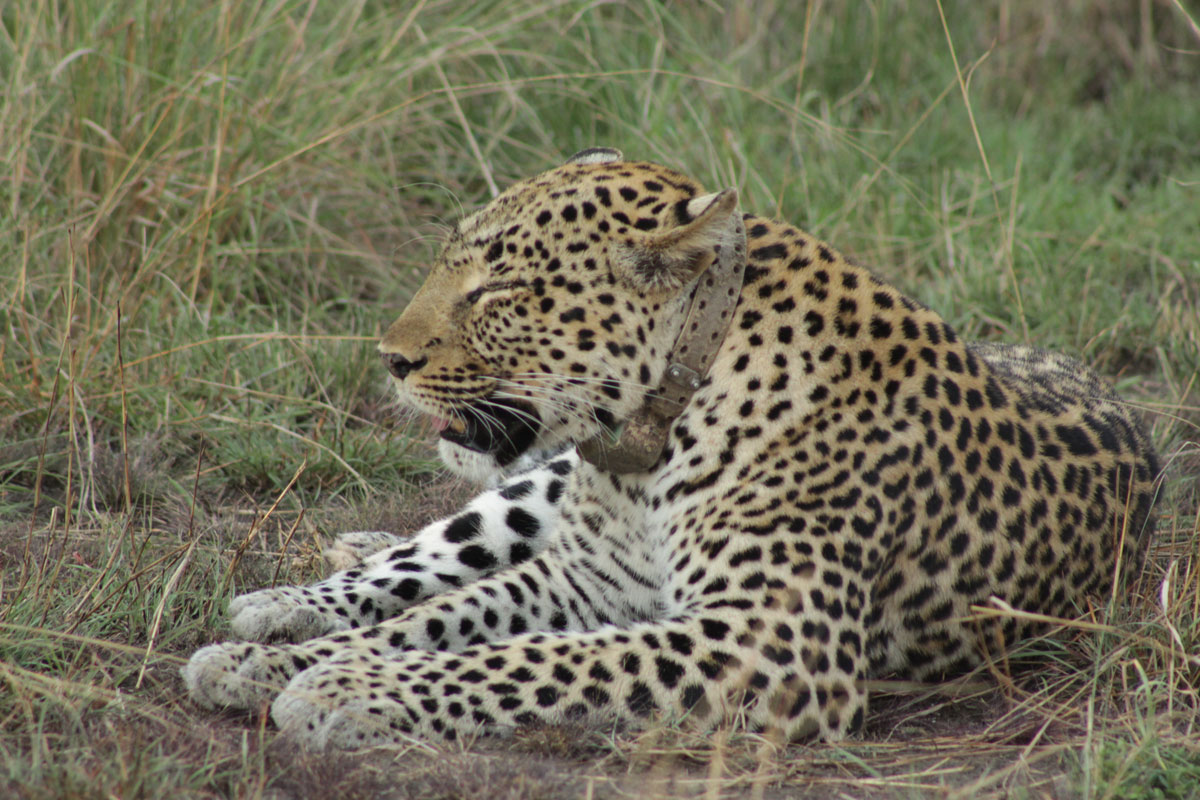Tsavo National Park is not only one of the oldest parks in Kenya but it is also the largest park in the country covering an area of about 22,000 sq. km.
The park is divided into Tsavo East and Tsavo West which have a range of different ecosystems, from the semi-arid plains of the Taru Desert to the lush, water-rich landscapes of the Mzima Springs. These ecosystems support many wild animals like lions, cheetahs, buffaloes, zebras, crocodiles, and over 500 bird species.
The park’s history is as rich as its biodiversity. Archaeological evidence suggests that there was human activity in the area during the Late Stone Age, with settlements concentrated along the Galana River. The park also played a role in the trade routes, with ivory, catskins, and possibly slaves being traded as early as 700 AD.
Today, Tsavo National Park is a place where nature’s drama unfolds daily, offering an adventure unlike any other to its visitors.
Tsavo East has flat and arid terrain with red-hued soil that stretches as far as the eye can see dotted by ancient baobab trees and acacia woodlands. Some of the main attractions that you should look out for include;
Red Elephants: Tsavo East is famous for its “red elephants,” which are covered in red dust from the park’s soil. They are a unique sight and a highlight of any visit to the park.
River Galana: This is Kenya’s second-longest river running for about 390 kilometers. The river flows through the dusty plains and joins the Tsavo and Athi Rivers before emptying into the Indian Ocean. It attracts a wide range of wildlife, including hippopotamuses and crocodiles, which gather around it to quench their thirst and cool off from the heat.
Yatta Plateau: The Yatta Plateau is thought to be one of the world’s oldest lava flows and it stretches for about 300 kilometers between the rivers Athi and Tavi. It offers breathtaking views and is a great spot for photography.
Lugard Falls: Lugard Falls is a series of white-water rapids formed on the Galana River. The falls are distinguished by rock patterns formed by cooled lava which interfered with the river’s flow to form the falls. Wildlife such as buffalos, hippos, and crocodiles can be seen in the pool formed by the falls. It’s also a picturesque spot for picnics and relaxation.
Mudanda rock: This is a 1.6km inselberg of stratified rock that stands out from the rest of the park. It is located near the Manyani gate with a 360-degree view of the park. Local tribes are said to have used it in the past to dry strips of meat and as a lookout. During the dry season, it serves as a water catchment for a natural dam below where wildlife come to drink water.
Aruba Dam: This is an excellent spot for game viewing because animals gather here to drink, especially during the dry season.
Wildlife: Tsavo East is home to a wide variety of wildlife, including lions, leopards, cheetahs, elephants, giraffes, zebras, buffalo, and numerous bird species that you should keep an eye out for during your visit.
Tsavo West has a more mountainous and wetter environment compared to Tsavo East. Here are some of the things you should keep an eye out for while here.
Wildlife: Tsavo West is home to many wild animals like elephants, lions, leopards, giraffes, zebras, buffaloes, and bird species.
Mzima Springs: These natural springs are the highlight of Tsavo West with crystal-clear water gushing from underground sources. This water is a habitat for hippos and crocodiles which you can view from an underwater viewing chamber.
Shetani Lava Flows: These are ancient lava flows formed around 500 years ago. These black, rugged landscapes are a unique sight spread over about 50 sq. km. with nearby caves. You will enjoy exploring the volcanic cones which also offer a unique backdrop for photography.
Ngulia Rhino Sanctuary: This sanctuary was established to protect the endangered black rhino. Here, you will be able to see the rhinos up close.
Chaimu Crater: You can hike to the top of this volcanic crater to enjoy stunning panoramic views of the park and surrounding landscapes. It is also a great spot for photography.
Roaring Rocks: These distinctive rock formations are named for the eerie sound the wind makes as it passes through them. They provide a scenic backdrop for game viewing and picnics.
Lake Jipe: This serene lake forms part of the park’s border with Tanzania. It’s a haven for birdwatchers, with over 400 bird species recorded in the area.
There’s no shortage of adventures to be had in Tsavo National Park. Here are some things you can do in Tsavo National Park.
Game drives are the best way to view the different wildlife species and other attractions in Tsavo National Park. These game drives usually take place in the morning or evening.

During morning game drives, tourists can see different wildlife species that are active at this time of day such as red-dusty elephants, lions, Cape buffalos, leopards and the Rhino, Giraffes, Impalas, Zebras, Cheetahs, Dik Dik among others.
Night game drives give you a chance to see the nocturnal wildlife species such as bush babies and predators like leopards, and lions preying on smaller animals.
Bird lovers are also not left out during their safaris to Tsavo National Park as they get to see various bird species such as ostriches, starlings, storks, pied kingfishers, vulturine guinea fowl, African fin foot, reed warbler, corncrakes, lesser kestrel, martial eagles, northern brownbul, and red-backed shrikes, black-faced sand grouse among others.
With over 500 bird species, be sure that you will have plenty of opportunities to watch different birds. Join a guided birding tour to explore the avian world of Tsavo.
This is a unique way of exploring the beauty of Tsavo. You will move around the park on foot for a closer encounter with nature.
These nature walks take place in the company of a ranger guide who shares information about the different attractions you will see as you follow different routes in the park.
Camping in Tsavo National Park is possible at either community or private campgrounds. These sites are in good wildlife viewing areas and are guarded by rangers. The most exciting thing about camping is being awoken by the birds singing or the roar of the king of the jungle patrolling its territory and easily viewing animals from your tent balcony.
Beyond its natural beauty, Tsavo National Park is also rich in cultural heritage. Do not miss the opportunity to visit local communities near the park and learn about their traditional way of life. Engage with Maasai and other indigenous tribes, listen to stories passed down through generations, and sample local cuisine.
After nightfall, Tsavo National Park reveals another breathtaking spectacle—the star-studded African sky. Spend an evening under the African stars, marveling at the Milky Way stretching across the heavens and listening to the nocturnal symphony of the bush. Whether you’re an astronomy enthusiast or simply seeking moments of wonder and awe, this is an experience you won’t soon forget.
After a day of exploration, you will need a place to relax and spend the night. Tsavo has a variety of comfortable lodges and campsites, where you can unwind amidst the sights and sounds of the wilderness. From luxury tented camps offering modern amenities to rustic bush camps that bring you closer to nature, there’s accommodation to suit every preference and budget.
Tsavo National Park is easily accessible from major cities like Nairobi and Mombasa, making it a convenient destination for both domestic and international travelers.
If you prefer a road trip, you can opt for a self-drive adventure or arrange for guided transportation with us. Tsavo has many gates, so you can choose the one closest to your starting point. The journey by road can take up to 5 hours depending on the gate you decide to use but the journey is quite scenic showing you the beauty of the Kenyan countryside.
there are different airstrips that tourists can use to fly to the national park and these include Voi, Kilaguni, Finch Hatton’s, Satao, and Sala airstrips among others.
While Tsavo National Park is a year-round destination, the best time to visit depends on your priorities. The dry season (June to October) offers excellent wildlife viewing opportunities, as animals congregate around water sources, making them easier to spot.
For birdwatchers, the wet season (November to May) brings migratory species and lush landscapes full of wildflowers.
Whenever you choose to visit, Tsavo promises an unforgettable safari experience that will leave you longing to return.
